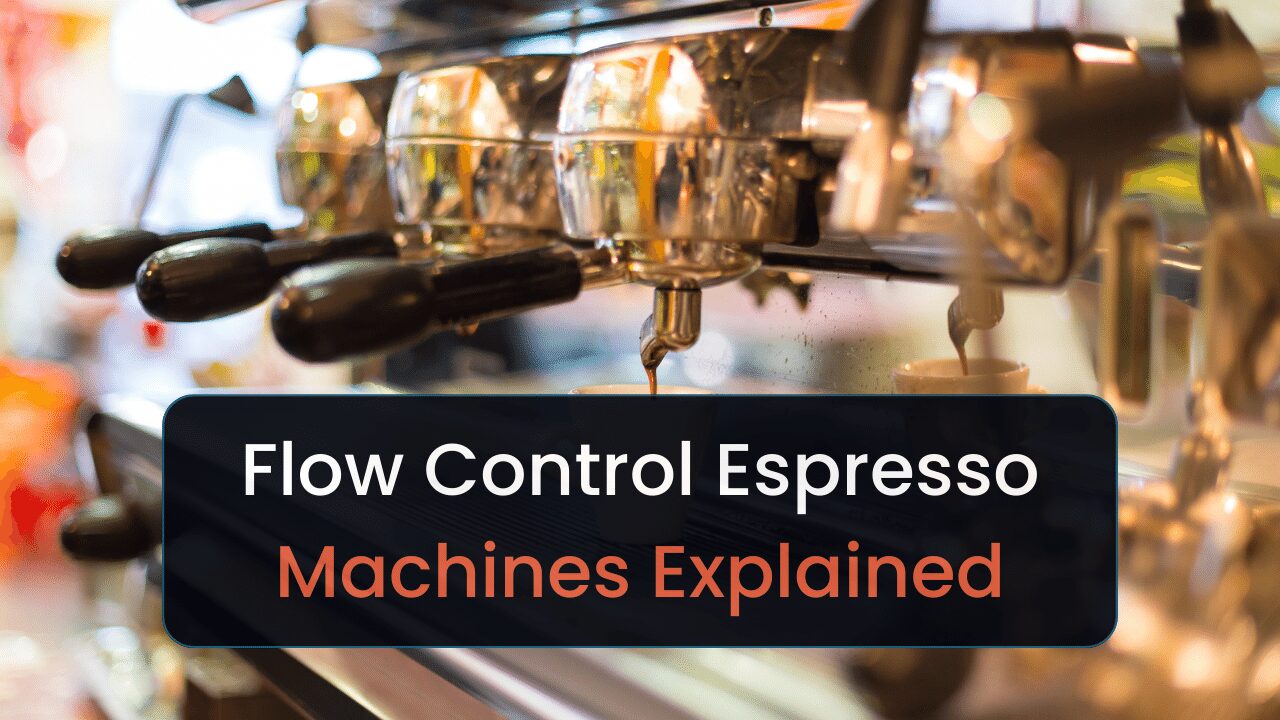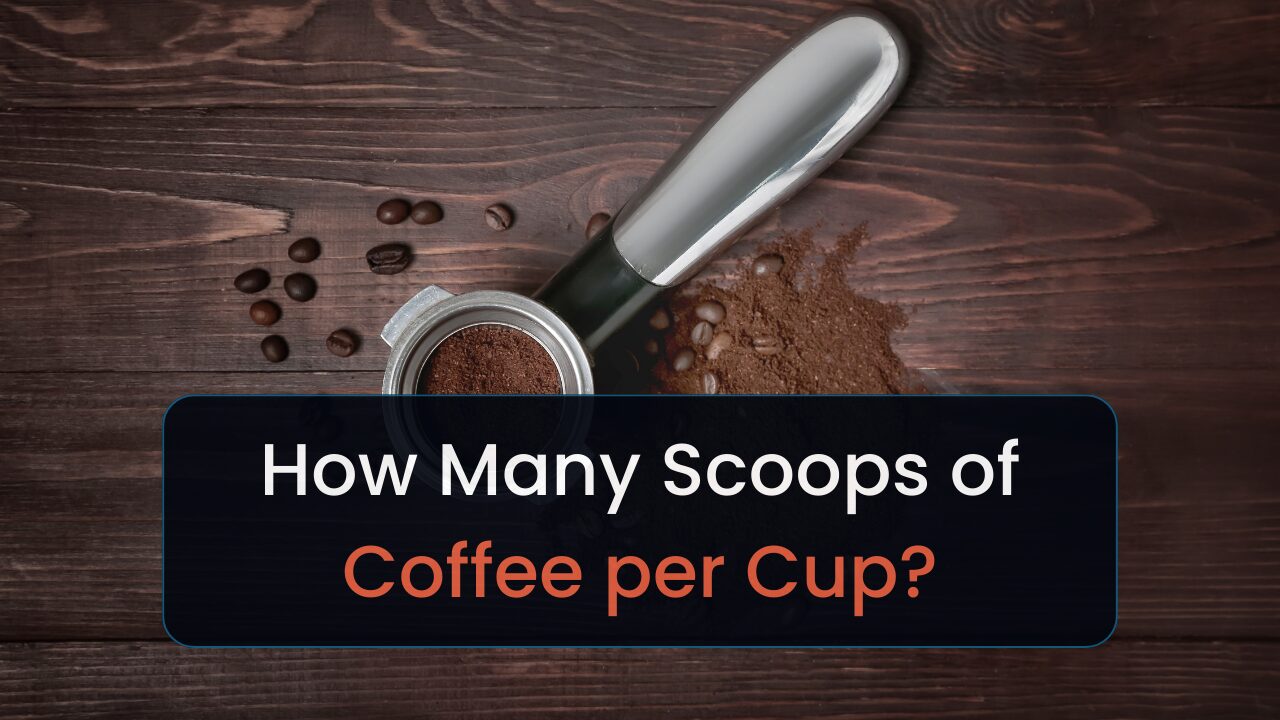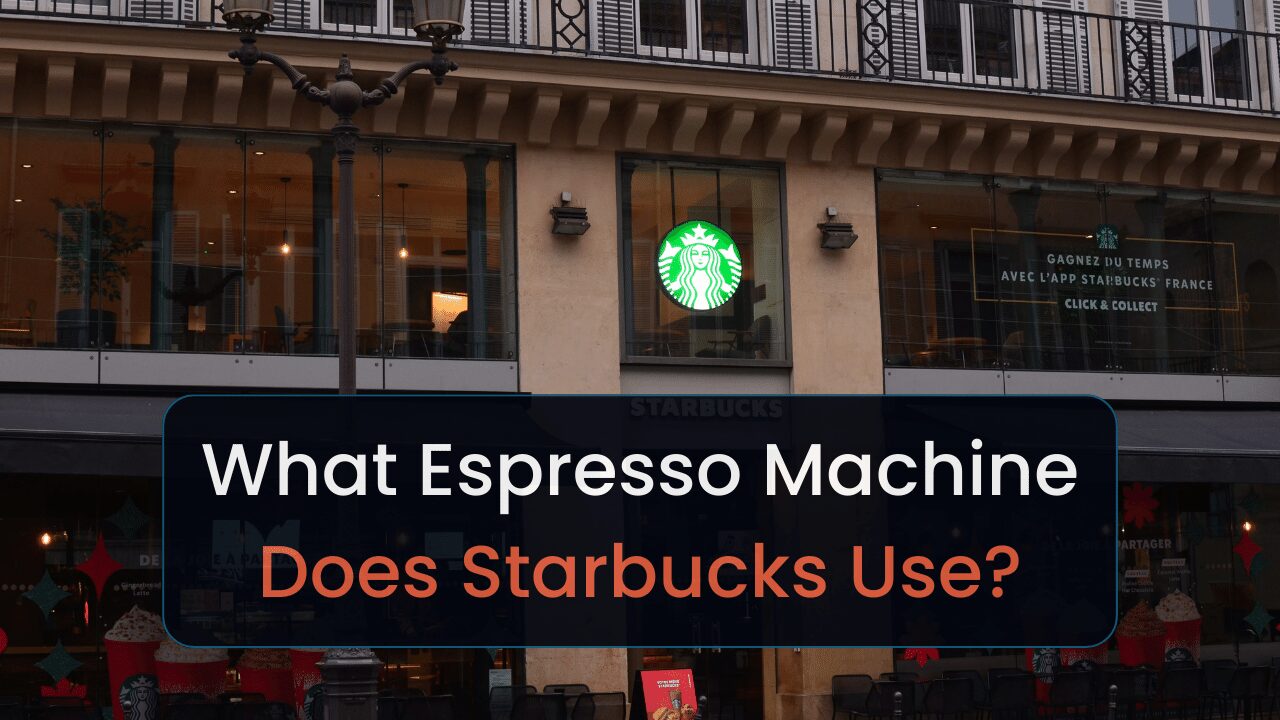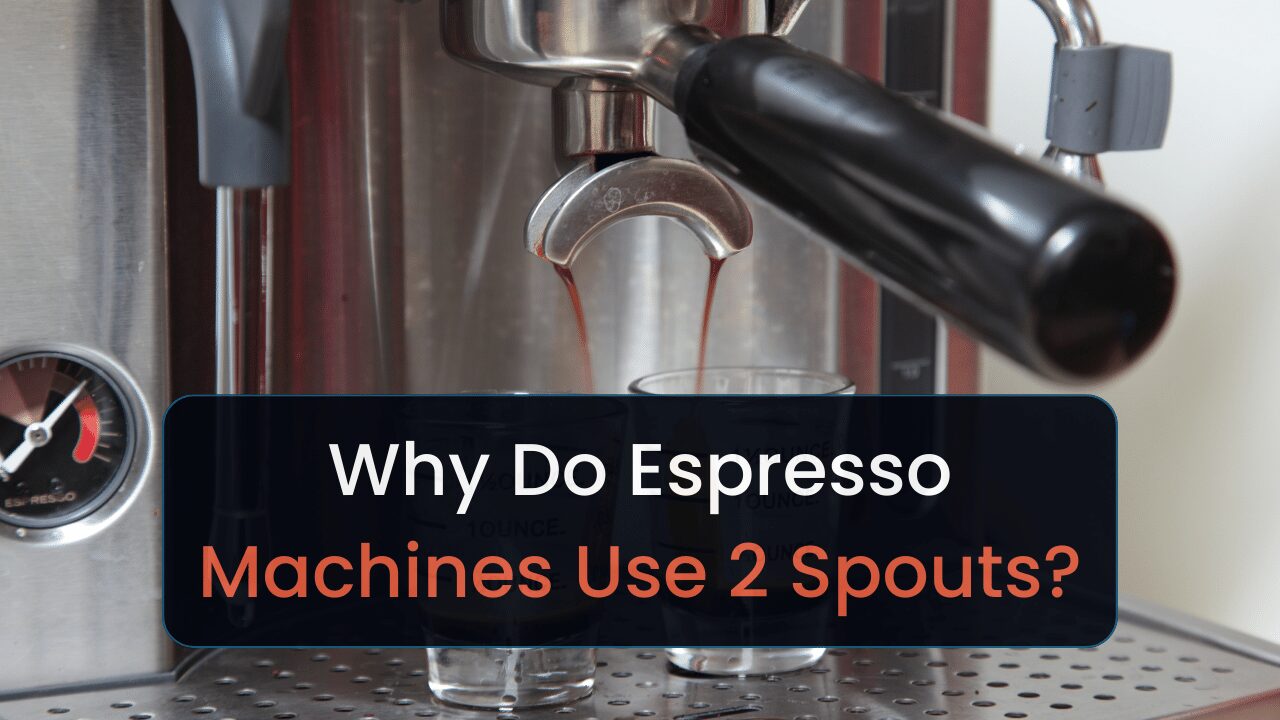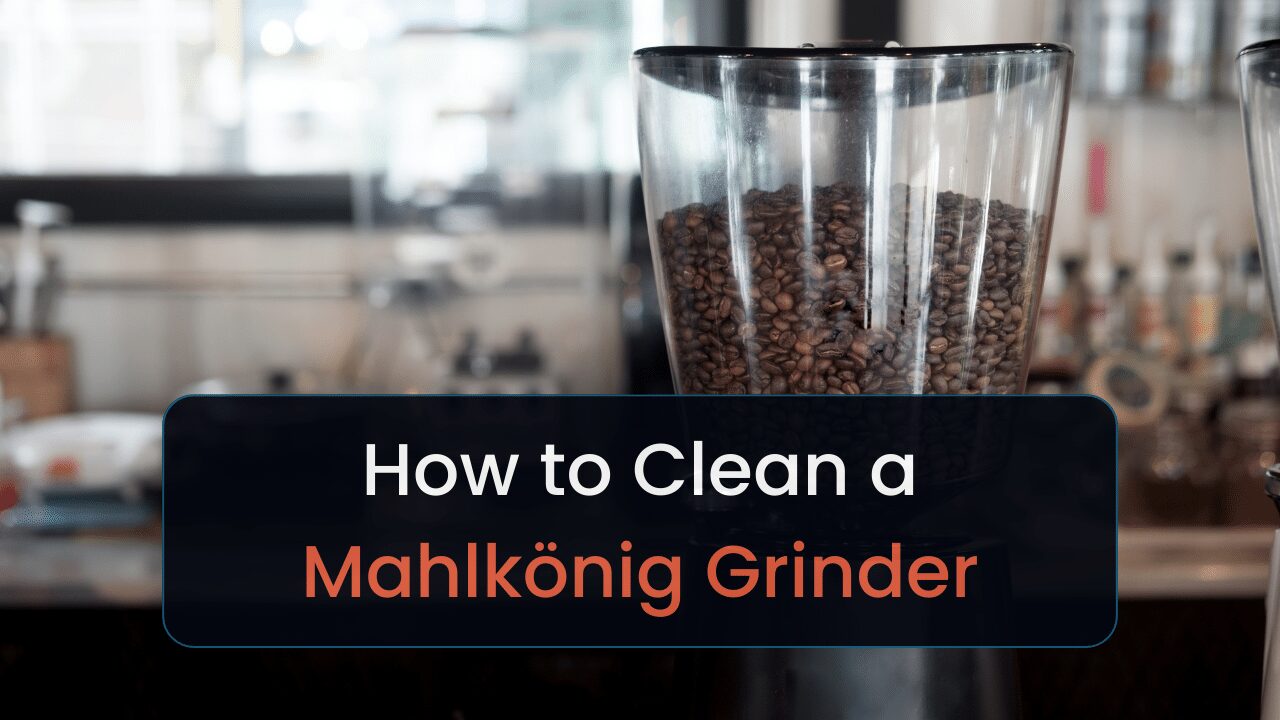This is our review of the best espresso machines with grinders. Explore available options.
I often don’t want to think about how I should grind my coffee beans for a specific drink. That’s why I put together a list of espresso machines with grinders. To help me find one that’ll do the work for me.
The best machine is the Breville Barista Pro because of its quick heat up time and inclusion of pre-infusion. The former is best for making drinks quickly. The latter, for making more flavorful beverages.
You may not like all the included features. I included some alternative machines that allow for simultaneous brewing and frothing. Along with additional “cool” features.
Read on to learn more.
Top 7 Espresso Machines with Grinder for Home
- Breville Barista Pro: Best Overall
- JURA ENA 4: Best Performer
- Gaggia Anima Prestige: Best Budget Pick
- Breville Barista Touch: Best for Beginners
- PHILIPS 3200: Best for Milk Drinks
- De’Longhi Magnifica XS: Most Compact
- De’longhi Dinamica: Best Machine UK
7 Best Espresso Machines with Grinder
The following sections will cover the specs, advantages and disadvantages, and other relevant information to help you determine whether each machine is worth getting. I’ll clear up details in the buyer’s guide section later on.
Here’s a bit of clarity now:
- Dimensions:
- D: depth
- W: width
- H: height
- PID = proportional integral derivative: monitors water temperature & makes minor adjustments to keep it to a set temperature.
- ESE = Easy Serve Espresso: pods with pre-ground beans to make brewing drinks easier.
Almost all machines on this are super-automatic espresso machines. Meaning they’ll automate every aspect of espresso making except tamping. Though, some machines also include automatic tamping.
Won’t make that big of a difference, but it’ll help speed things up.
If there’s a semi-automatic or automatic machine, I’ll specify in the particular review. Otherwise, assume everything is super-automatic.
If you’re looking for commercial models, you can find all our espresso machines with grinders here.
Let’s go.
1. Breville Barista Pro: Best Overall
![7 Best Espresso Machines With Grinder in [currentyear] 1 breville barista pro](https://timscoffee.com/wp-content/uploads/2023/06/breville-barista-pro.png)
| Price | $$ |
| Dimensions | 12 × 13 × 13 in (D, W, H) |
| Machine Type | Semi-automatic |
| Boiler Type | Single |
| Warranty | 2 years |
| Milk Frother | Yes |
| Water Capacity | 67 fl oz = 67 solo shots |
| Material | Stainless steel |
| Hopper Capacity | 8.1 oz |
| Grinder Burr Type | Stainless steel conical burr grinder |
Pros
- Includes pre-infusion feature for better extraction
- Equipped with an integrated conical burr grinder
- Features a ThermoJet heating system for quick heat-up
Cons
- Machine stays cold in idle requiring preheating
- Grinder can retain some coffee grounds
- Grind consistency isn’t as good as standalone grinders
The Breville Barista Pro is an excellent fit for those who appreciate advanced features. Like an integrated conical burr grinder, PID temperature control, and the ThermoJet heating system, packed in a sleek, practical design.
It’s a semi-automatic machine, which means it’ll only automate boiling water and applying pressure to beans. This works best for folks who want to maintain control over most parts of espresso making.
The Barista Pro uses a single boiler, known for its slow(ness) and inability to froth milk and brew drinks simultaneously. However, this particular machine uses a ThermoJet heater. It’ll heat your device in 3 seconds [1].
Great for making drinks quickly. And making it worth its cost.
You’ll also need to preheat the machine before use. That way, you’ll ensure your drink has consistent temperatures, which could affect taste. The pre-infusion feature will gently wet beans before brewing, making extracting flavors easier.
The grinder isn’t anything special. Nor is it ideal. Steel burrs tend to burn flavor out of beans and cause a bit of bitterness. And conical burrs tend not to have the best consistency. Flat burrs tend to work best since they’ll often grind beans more evenly than their conical counterparts.
And ceramic burrs don’t heat, which means they won’t affect flavor. However, they don’t last as long as steel, since they lose sharpness sooner.
But it’s a type of grinder that most machines on this list will include.
Here’s a great performer.
2. JURA ENA 4: Best Performing Automatic Espresso Machine with Grinder
![7 Best Espresso Machines With Grinder in [currentyear] 2 jura ena 4](https://timscoffee.com/wp-content/uploads/2023/06/jura-ena-4.png)
| Price | $$$ |
| Dimensions | 17 × 10.7 × 12.7 in (D, W, H) |
| Machine Type | Super-automatic |
| Boiler Type | Single |
| Warranty | 2 years |
| Milk Frother | No |
| Water Capacity | 37.2 fl oz = 37 solo shots |
| Material | Stainless steel |
| Hopper Capacity | 4.2 oz |
| Grinder Burr Type | Stainless steel conical burr grinder |
Pros
- Produces flavorful espresso
- Suitable for kitchens with limited space.
- Easy to clean and maintain
Cons
- It may be considered expensive for some users.
- Does not include a milk frother.
- Has a small water tank & bean hopper.
The JURA ENA 4 works best for individuals who prefer a straightforward, easy-to-maintain machine that delivers flavorful coffee and espresso. Without needing milk-based beverages.
It has a single boiler, which heats the slowest among boilers. I’d usually also say that you can’t froth milk and brew drinks simultaneously. But this is one of few espresso machines I’ve seen without a milk frother.
A disappointment for latte lovers. Since you can’t make any unless you buy a separate milk frother.
However, this machine’s great for small kitchens. Something you don’t see often with super-automatic machines. They usually demand more countertop real estate due to all the included features (e.g., built-in grinder).
However, that results in a small bean hopper and water tank, which may require frequent refilling for heavy coffee drinkers.
The Pulse Extraction Process (P.E.P) forces water through grounds at short intervals, which extracts more flavors from your beans. And the AromaG3 Grinder basically eliminates the issues associated with stainless steel grinders [2].
This material tends to heat up fast and burn some of the beans’ flavor. The G3 grinder’s motor will spin the burrs to make it so the grinder will preserve your beans’ flavor.
Want to pay less? I got you.
3. Gaggia Anima Prestige: Best Budget Option
![7 Best Espresso Machines With Grinder in [currentyear] 3 gaggia anima prestige](https://timscoffee.com/wp-content/uploads/2023/06/gaggia-anima-prestige.png)
| Price | $$ |
| Dimensions | 13.4 × 8.7 × 17.0 in (D, W, H) |
| Machine Type | Super-automatic |
| Boiler Type | Single |
| Warranty | 1 year |
| Milk Frother | Yes |
| Water Capacity | 60.9 fl oz = 60 solo shots |
| Material | Plastic |
| Hopper Capacity | 8.8 oz |
| Grinder Burr Type | Ceramic flat burr grinder |
Pros
- Delivers bean-to-cup feature
- Compact design, particularly the milk system
- Offers a fine balance between cost & performance
Cons
- Cleaning the milk system requires some effort
- The machine is entirely cased in plastic
- Small drip tray
The Gaggia Anima Prestige suits those who appreciate the convenience of bean-to-cup brewing and automated milk frothing for cappuccinos, macchiatos, and lattes. All in a compact, space-saving design
Anima Prestige’s boiler is a bit of a disappointment. It’s a single, which means you won’t brew drinks and steam milk simultaneously. It’ll make brewing a bit more inconvenient.
Otherwise, the machine has some excellent features that make it worth the price.
I’ll list them for convenience’ sake:
- Flatt burr: Leads to more consistent grinds vs. conical burrs.
- Ceramic burrs: Burrs don’t heat up like stainless steel, which prevents flavor loss.
- They do lose sharpness quicker, which could result in a replacement.
- Automatic milk frothing: Will froth milk based on chosen drink (e.g., cappuccino or latte).
- Descaling alert: Know when it’s time to descale.
- Removable brew group: Easier maintenance & part cleaning.
But the machine’s casing is made of plastic, which might not be as aesthetically pleasing as stainless steel or chrome. And it might not last as long as their more robust counterparts. Another design choice I didn’t care much for was the small drip tray.
It fills up quickly with post-extraction rinsing water, requiring frequent emptying.
Beginners will love this next machine.
4. Breville Barista Touch: Best for Beginners
![7 Best Espresso Machines With Grinder in [currentyear] 4 Breville Barista Touch Espresso Machine](https://timscoffee.com/wp-content/uploads/2023/04/Breville-Barista-Touch-Espresso-Machine.png)
| Price | $$$ |
| Dimensions | 12.7 × 15.5 × 16 in (D, W, H) |
| Machine Type | Super-automatic |
| Boiler Type | Dual boilers |
| Warranty | 2 years |
| Milk Frother | Yes |
| Water Capacity | 67 fl oz = 67 solo shots |
| Material | Stainless steel |
| Hopper Capacity | 8.1 oz |
| Grinder Burr Type | Stainless steel conical burr grinder |
Pros
- Offers automatic milk frothing
- Includes a touch screen interface for easy use
- Comes with pre-infusion.
Cons
- Requires regular cleaning & maintenance
- Expensive
- The grinder settings may need adjustment for optimal use
The Breville Barista Touch is ideal for coffee enthusiasts who value convenience and versatility. As its user-friendly interface with customizable settings make it easy to craft a variety of cafe-quality beverages at home
The Touch includes dual boilers, the quickest heating of all boiler types. And it allows for simultaneous drink brewing and milk frothing. Excellent for making drinks quicker.
All the included features make it fantastic for entertaining guests. For instance, the programmable touchscreen allows you to select a drink, then the Touch brews per its specifications. It’ll choose the right bean grind, temperature, pressure, etc.
To further enhance your drink’s flavor, it includes pre-infusion. It gently wets beans before brewing, which extracts more flavors.
The features and components mentioned thus far make this appliance worth the cost, though it costs more than many other Sage/Breville models.
Most built-in grinders don’t have the most consistent grinds. You’ll need to tinker with the machine’s settings before finding one that meets your preference. And as with most other espresso machines with grinders, you’ll need to perform maintenance regularly.
Unless you want drinks that taste funky due to bean residue stuck in grinder burrs.
This next one’s for cappuccino and latte lovers.
5. Philips 3200: Best for Milk Drinks
![7 Best Espresso Machines With Grinder in [currentyear] 5 philips 3200](https://timscoffee.com/wp-content/uploads/2023/05/philips-3200.png)
| Price | $ |
| Dimensions | 9.7 × 14.6 × 17.0 in (D, W, H) |
| Machine Type | Super-automatic |
| Boiler Type | Single |
| Warranty | 2 years |
| Milk Frother | Yes |
| Water Capacity | 60.9 fl oz = 60 solo shots |
| Material | Plastic |
| Hopper Capacity | 9.5 oz |
| Grinder Burr Type | Ceramic flat burr grinder |
Pros
- Offers a variety of drink options
- Easy to clean and maintain
- Thoughtful design that doesn’t take up much counter space
Cons
- The coffee produced can be weak
- Milk foam could be denser
- The machine is relatively expensive
The Philips 3200 espresso machine is great for coffee enthusiasts who value convenience and simplicity, without compromising on variety.
You won’t brew drinks and froth milk simultaneously with the single boiler included in the 3200. And it won’t heat fast compared to dual boilers or thermo heating systems Breville machines have. Not great for making drinks quick.
Despite the horrible boiler, it’s still a somewhat affordable fully-automatic machine packed with features.
Though the milk foam isn’t super-dense. Not ideal for making drinks like cappuccinos. But it’s automated, reducing the need for manual input. And great for brewing milk-based drinks when you’re in a rush.
And though the machine has up to 15 bars of pressure, many complain that the coffee produced isn’t the strongest. This may just require practice and fine-tuning the machine to match your preferences.
My favorite feature is the programmable buttons. Tap a button (e.g., Americano), and the 3200 makes that drink based on its ratio. The machine’s AquaClean filters also make maintenance easier. Since it reduces limescale buildup.
A substance that could negatively impact your drink’s flavor.
And lastly, the grinder. Many pricier super-automatic machines use stainless steel conical burrs. While they’ll last longer than ceramic, most of the time, they’ll strip flavor from your beans due to overheating. Ceramic burrs don’t have such a weakness.
Those with small kitchens or studio apartments will appreciate the next pick.
6. De’Longhi Magnifica XS: Best Small Espresso Machine with Grinder
![7 Best Espresso Machines With Grinder in [currentyear] 6 delonghi magnifica](https://timscoffee.com/wp-content/uploads/2023/06/delonghi-magnifica-xs.png)
| Price | $ |
| Dimensions | 14.4 × 11.0 × 15.3 in (D, W, H) |
| Machine Type | Super-automatic |
| Warranty | 2 years |
| Milk Frother | Yes |
| Water Capacity | 60.9 fl oz = 60 solo shots |
| Material | Stainless steel & plastic |
| Hopper Capacity | 8.8 oz |
| Grinder Burr Type | Stainless steel conical burr grinder |
Pros
- Compact design
- High level of customization with 13 grind settings.
- Integrated grinder & milk frothing system add to its versatility.
Cons
- The stainless-steel grinder can heat up.
- Can’t simultaneously steam milk & brew coffee.
- The machine may not be suitable for use with oily coffee beans.
The De’Longhi Magnifica XS works best for hobbyists and casual users who appreciate its ease of use. As well as coffee purists who will enjoy the ability to fine-tune their beverages to their liking.
Single boilers take the longest to heat and don’t allow you to brew coffee and steam milk at the same time. Not great for brewing drinks quickly.
Considering the price, I wish they had better burrs. Or at least flat burrs, since they’ll have more consistent grinds compared to conical ones [3]. It helps with flavor extraction. And stainless steel could burn your beans and make them lose flavor.
And using oily beans could further impact your drink’s flavor. Since they could stick to your grinders. Then eventually degrade and lead to weird flavors.
However:
It’s more compact than the previous option. And it has a stainless steel body, which will last longer than ones with plastic bodies. Making it a great value.
There isn’t anything else that’s too special with this machine. Consider it if you want an alternative to bulkier alternatives.
Here’s a great machine for those living in the UK.
7. De’Longhi Dinamica: Best Espresso Machine with Grinder UK
![7 Best Espresso Machines With Grinder in [currentyear] 7 DeLonghi Dinamica Plus Espresso Machine](https://timscoffee.com/wp-content/uploads/2023/04/DeLonghi-Dinamica-Plus-Espresso-Machine.png)
| Price | ££££ |
| Dimensions | 36.1 × 25.9 × 46.7 cm (D, W, H) |
| Machine Type | Super-automatic |
| Boiler Type | Single |
| Warranty | 2 years |
| Milk Frother | Yes |
| Water Capacity | 2 l = 67 solo shots |
| Material | Plastic |
| Hopper Capacity | 397 g |
| Grinder Burr Type | Stainless steel conical burr grinder |
Pros
- Variety of drink options
- Features an automatic milk frothing system
- Remote operation via the De’Longhi Coffee Link app
Cons
- Despite its price, the machine’s exterior is almost entirely plastic
- The machine is relatively noisy
- Requires regular maintenance
The De’Longhi Dinamica Plus is an excellent choice for coffee enthusiasts seeking a convenient, high-quality espresso experience at home. It’s an excellent choice for those in the United Kingdom (and Canada) due to De’Longhi’s far-reaching international warranty.
Like most machines on this list, the Dinamica Plus includes a single boiler. Preventing you from brewing and frothing milk simultaneously.
However, when it’s time to froth, the automatic milk frothing system will do everything for you. Ideal for easy preparation of lattes, cappuccinos, and more. Then you’ll have access to the programmable drink options.
Want a cappuccino? Tap the button and the Dinamica will brew the drink per its specifications.
All the included features and ease of use make it worth its price point.
Don’t use it when you’re not trying to wake anyone. The machine’s loud during use. And you’ll have to perform regular maintenance. Including emptying the used grounds container and refilling the water tank
My last complaint stems from the plastic body. It lacks a premium feel considering its price point.
Learn how to choose a great espresso machine with a grinder.
How to Choose the Best Espresso Machine with Grinder
Here’s how to shop for an espresso machine with a built-in grinder:
| Checklist | Why it’s Important |
| Water Pressure | Affects flavor. |
| Ease of Use | Whether it’s accessible. |
| Time to Heat | Time it takes to warm up. |
| Design | How it looks & fits. |
| Price | Whether it’s affordable. |
| Brewing Capabilities | What drinks it can make. |
| Additional Features | Affects convenience & taste. |
| Hopper Capacity | How many beans it can hold. |
| Grinder Burr Type | Affects grind consistency. |
The following sections will cover all the factors you should consider when shopping for an espresso machine. I’ll cover tidbits that’ll help you build your criteria.
1. Water Pressure
- <7 bars: under-extracted; super sour
- 7–9 bars: Mild flavor & a bit sour
- 9 bars: sweet spot; balanced flavor & excellent starting point
- 15 bars: stronger-tasting drink, but not too bitter
- >15 bars: over-extracted drink; excessively bitter
Espresso requires 9 bars of water pressure for optimal brewing. This pressure drives the water through the coffee grounds at the right speed, extracting the perfect amount of flavor and aroma.
Espresso Machines with Grinder also typically operate at around 9 bars. They maintain this pressure level to consistently produce well-extracted espresso.
If you increase the pressure beyond nine bars, the water rushes through the coffee too quickly. This results in over-extraction and draws out excessive bitter elements, ruining your drink’s taste.
If the pressure drops below 9 bars, the water seeps too slowly through the coffee. It causes under-extraction, leaving you with a sour, under-flavored espresso.
2. Time to Heat
- Temperature control: Maintains machine temperature.
- Boiler type: Time it takes to heat the machine.
- Time to heat frother: Time it takes to heat milk frother/steamer.
Espresso machines with grinders often use different types of boilers for temperature control. A single boiler heats water for brewing and steaming, but you can’t do both at once.
They’ll sometimes use dual boilers. These allow simultaneous brewing and steaming. Leading to faster and more precise temperature control.
Heating a milk frother on these types of machines usually takes 30 to 60 seconds. This time can vary depending on the machine and the volume of milk.
3. Design
- Size: Compact(ness)
- Aesthetics: Whether it looks good.
- Materials: Stronger materials equals longer lifespan.
- Water reservoir size: Determines time required before next refill.
Espresso Machines with Grinder come in varying sizes, but many have compact designs suitable for tight spaces.
Aesthetics is about the machine’s visual appeal. It should fit well with your kitchen decor. Machines with grinders regularly boast sleek designs with modern looks that can complement any kitchen.
Stainless steel is common in espresso machines with a grinder. This material is tough, easy to clean, and resists corrosion. Ensuring a long-lasting machine.
Water reservoir size affects how many cups of coffee you can make before refilling. Super- and semi-automatic machines with built-in grinders usually have large reservoirs for convenience.
Many higher-end espresso machines have the ability to connect directly to plumbing. This means the water reservoir refills itself, providing a constant water supply. This feature saves you the trouble of frequently refilling the water tank.
4. Ease of Use
Make cleaning easier by keeping an eye out for these features:
- Touchscreen interface: Allows you to choose programmed drinks.
- Removable components: Makes cleaning & maintenance easier.
- Descaling notification: Notifies you when it’s time to descale.
- Automatic descaling: Descales your machine for you.
Touchscreen interfaces typically come with espresso machines with a grinder. These interfaces make machine operation more intuitive and user-friendly. For instance, you tap a drink you want (e.g., Americano), and the machine brews based on its ratio.
Removable components are also a standard feature for these types of machines. They ensure easy cleaning and maintenance, key for the machine’s lifespan and performance consistency.
Descaling notifications and automatic descaling are typically present in espresso machines with a grinder. These features make machine maintenance simpler and more efficient.
5. Brewing Capabilities
- Shot preparation methods: Doppio, ristretto, etc.
- Included milk frother: All machines in this price range include them.
All espresso machines with grinders can make these drinks:
| Americano | Cortado | Long macchiato |
| Black Eye | Guillermo | Rápido y Sucio |
| Cappuccino | Galão | Café Crema |
| Dripped Eye | Irish Coffee | Freddo Cappuccino |
| Flat White | Café Medici | Affogato al Caffe |
| Latte | Café Breve | Mocha |
| Lazy Eye | Vienna Coffee | Cubano |
| Manilo Long Black | Macchiato | Zorro |
| Red Eye | Espresso Romano | Marocchino |
Many machines with grinders include programmable buttons. Tap a button like “Cappuccino” and the machine will brew drinks per its specifications. A great way to save time.
6. Grind Burr Type
Grind burr types matter a lot in an espresso machine because they affect the uniformity of the coffee grounds. It influences the extraction process and the taste of your espresso.
Ceramic and stainless steel are the most common materials in espresso machines with grinders.
Stainless steel burrs are known for their durability and heat conductivity. They’re less prone to chipping. But it can heat up quicker, which might affect the taste of the coffee if you’re grinding a large amount at once.
They’re also more affordable.
Ceramic burrs stay cool even during extended grinding, which protects the flavor of the coffee. They’re also very sharp, providing precise and uniform grinding. However, they’re more brittle than steel, and can chip if a hard object gets into the grinder.
There are also two main types of burrs: conical and flat.
Conical burrs operate quieter, faster, and less likely to clog. They create bimodal grinds, which some baristas believe makes for a more complex flavor.
Flat burrs give a consistent grind size, which can result in a balanced extraction.
7. Grinder Hopper Capacity
Grinder hopper capacity matters because it determines how much coffee you can grind at once.
A larger capacity means you can prepare more espresso shots without refilling. Handy if you make a lot of coffee or host parties. If you prefer to use fresh beans every time, you want a smaller hopper.
Espresso machines with grinders typically have hopper capacities ranging from a quarter pound to a pound.
8. Quality-of-life Features
Let’s compare a bunch of luxury features for espresso machines with grinders:
| Feature | Description | Best For |
| Pre-Infusion | Wets coffee grounds before extraction, promoting even flavor extraction. | Rich espresso |
| Cup Warmers | Keeps your espresso hot longer. | Coffee warmth |
| Programmable Settings | Adjust brewing parameters like temperature & pressure. | Customization |
| Automatic Tamping | Compresses coffee grounds evenly. | Consistent espresso taste |
| PID Temperature Controller | Control over brewing temperature. | Temperature stability |
Espresso machines with grinder usually come packed with features for user convenience, often including those listed above.
Lower-end espresso machines with grinders will include pre-infusion, pre-programmed drink settings, and cup warmers. All great for making espresso quicker.
However, you’ll need to spend more (at least $1,000) to get features like PID temperature control and automatic tamping.
Types of Espresso Machines with Grinders Compared
Here are all the different types of espresso machines available:
| Machine Type | What it Automates | Best for | Avg. Price |
| Super-automatic | Everything | Automated traditional espresso | $800–$5,000 |
| Semi-automatic | Pressure & water flow | Graduating from manual machines | $200–$2,000 |
Our Verdict
Here are the best 3:
- Breville Barista Pro: Heats quick & includes pre-infusion.
- JURA ENA 4: Compact & sleek, modern look.
- Gaggia Anima Prestige: Affordable, attractive, & includes automatic milk frother.
The Breville Barista Pro topped this list due to its affordability, robust build, and inclusion of pre-infusion. Yet, you retain control over espresso making due to its semi-automatic nature.
You may not like any of the machines I mentioned, if you still want automation, consider one of these automatic espresso makers.

